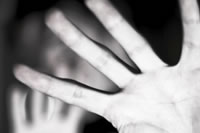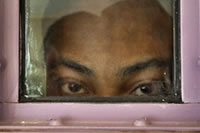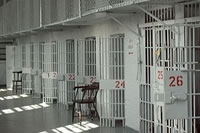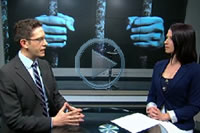 Independent monitoring boards and the chief inspector of prisons are not pleased with what has been found throughout the UK’s prison system. Overcrowding, violence, and even suicide have been on the rise among inmates, and there doesn’t seem to be an end in sight.
Independent monitoring boards and the chief inspector of prisons are not pleased with what has been found throughout the UK’s prison system. Overcrowding, violence, and even suicide have been on the rise among inmates, and there doesn’t seem to be an end in sight.
Will the shocking conditions spark reform efforts? Read more at politics.co.uk![]()

 The number of juveniles arrested in 2013 amounted to a double digit reduction, outperforming numbers from previous years and the number of adult arrests in 2013. Is the trend of criminalizing children coming to an end? The number of arrests certainly seems to suggest it.
The number of juveniles arrested in 2013 amounted to a double digit reduction, outperforming numbers from previous years and the number of adult arrests in 2013. Is the trend of criminalizing children coming to an end? The number of arrests certainly seems to suggest it. Published in October, Robbin Shipp and Nick Chiles’s new book Justice While Black: Helping African-American Families Navigate and Survive the Criminal Justice System is touted as “a must-read for every young black male in America—and for everyone else who cares about their survival and well-being,” and another
Published in October, Robbin Shipp and Nick Chiles’s new book Justice While Black: Helping African-American Families Navigate and Survive the Criminal Justice System is touted as “a must-read for every young black male in America—and for everyone else who cares about their survival and well-being,” and another  For several decades, Sweden has giving priority to probation and alternative penal sanctions over imprisonment, with positive results. Admissions into the penal system have gone down six percent each year since 2011 and the overall recidivism rate is slightly more than 30%. With a focus on keeping control of prisons, using time behind bars productively, and treating prisoners like “humans” and not “criminals”, Sweden’s prison system is very different from America’s, with more success in many aspects of the system.
For several decades, Sweden has giving priority to probation and alternative penal sanctions over imprisonment, with positive results. Admissions into the penal system have gone down six percent each year since 2011 and the overall recidivism rate is slightly more than 30%. With a focus on keeping control of prisons, using time behind bars productively, and treating prisoners like “humans” and not “criminals”, Sweden’s prison system is very different from America’s, with more success in many aspects of the system. As pushes for Universal Pre-K education occur in New York and beyond, supporters are showing how more access to early education could lower prison numbers. With numerous studies proving that students who participate in preschool are more likely to succeed in school and graduate. It has also been shown repeatedly that there is a correlation between a high school diploma and the likelihood of having a criminal history.
As pushes for Universal Pre-K education occur in New York and beyond, supporters are showing how more access to early education could lower prison numbers. With numerous studies proving that students who participate in preschool are more likely to succeed in school and graduate. It has also been shown repeatedly that there is a correlation between a high school diploma and the likelihood of having a criminal history. In a state where more prisoners have been executed than in any other, where prison populations have skyrocketed over the last few decades, “tough on crime” is simply a way of life. But recently, Texas has been making headlines for the complete opposite – the constant influx of new prisoners has subsided, and recidivism rates are down.
In a state where more prisoners have been executed than in any other, where prison populations have skyrocketed over the last few decades, “tough on crime” is simply a way of life. But recently, Texas has been making headlines for the complete opposite – the constant influx of new prisoners has subsided, and recidivism rates are down. Usually a public health epidemic refers to something like the flu. However, a new study shows that America’s newest public health epidemic may be the decades of mass incarceration and substandard prison conditions.
Usually a public health epidemic refers to something like the flu. However, a new study shows that America’s newest public health epidemic may be the decades of mass incarceration and substandard prison conditions. In the Los Angeles County Men’s Central Jail, the 400 members of the newly created KG6 wing represent a special prison population. In a jail full of non-violent offenders, the gay and transgender men that make up this new wing say that violence against them has been an issue when serving time in the general population.
In the Los Angeles County Men’s Central Jail, the 400 members of the newly created KG6 wing represent a special prison population. In a jail full of non-violent offenders, the gay and transgender men that make up this new wing say that violence against them has been an issue when serving time in the general population. RT asked its viewers to question more about the American prison system recently, filling an entire episode with a look at several stories about prison, and reforms. Some of the topics covered are Proposition 47, the prison payment service JPay, and an analysis of Norway’s prison system with its stark differences to the policies and practices in the United States.
RT asked its viewers to question more about the American prison system recently, filling an entire episode with a look at several stories about prison, and reforms. Some of the topics covered are Proposition 47, the prison payment service JPay, and an analysis of Norway’s prison system with its stark differences to the policies and practices in the United States.